Providence Commercial Graffiti
I was inspired to research this topic after taking a Downtown Providence architecture seminar last semester. As a field trip for the seminar, the instructor conducted a walking tour downtown. Along the tour, historic spots were pointed out that revealed Providence’s history. Most of these sites are rich with history but are ignored and underappreciated by the everyday pedestrian. The sites I found most interesting and explored further were sites of paintings and signage on walls of buildings. Hence, I labeled the assignment Providence Graffiti.
Graffiti is often referred to as the plight of the urban experience. In modern times, it is most commonly used to mark gang territory or demonstrate public art. Rarely is graffiti thought of as a memorial or link to the past. However, in the 19th and 20th century, painting or writing on public walls was the primary mean of advertisement for many small businesses. Stores would commonly have murals of the company name or images of goods being sold painted on the building walls.
Sadly, this “graffiti” from the early 20th century has little meaning to the public today. The painted signs are now faded and the cityscape of Providence has changed so drastically that the image of the early 20th century city has all but vanished. However, with the right clues, one can discover a city that was once thriving as a commercial center.
For this assignment I have chosen to examine a building downtown on the corner of Westminster street and Union street called the Shepard’s building. Shepard’s was a large department store that attracted many shoppers from Rhode Island, which developed Providence as the shopping capital of New England. Its structure is evidence of Providence’s market history and can be seen in the old entrance, street clock and bridge.
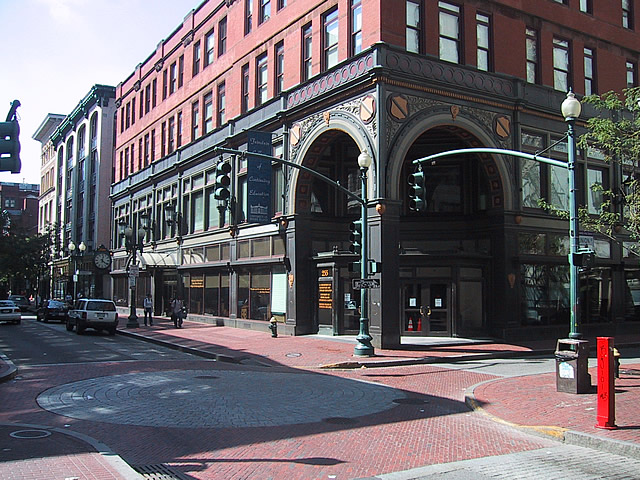 Corner of Westminster & Union
Corner of Westminster & Union
The 1920s marked the explosion of Providence's downtown shopping which was focused along Westminster Street. The most obvious memorial to this era is the Tri-Store Bridge that connects two buildings across Clemence Street. The Tri-Store bridge was built just before 1900 when three department stores, Cherry & Webb, Gladding’s and Shepard’s occupied the buildings along Westminster. Cherry & Webb and Gladding’s were retail stores but were not in competition. Gladding’s is the oldest, dating back to the 1770s and originally stood on North Main Street. In 1878, Gladding’s moved to the Butler Exchange on Westminster. The move to the central location in downtown Providence resulted in great success and by 1891, Gladding’s could afford to lease a second building at 291 Westminster. Gladding’s continued to thrive during first half of the century but met bankruptcy in 1972, bringing an end to nearly two centuries of business. The building is now occupied by Johnson and Wales University. Cherry and Webb was a high-end women’s clothing store specializing in fur coats. As an interesting side note, a Providence Journal article in 1938 recounts the drowning of a Cherry & Webb employee in the hurricane of 1938. Apparently, the employee was trapped in the basement while attempting to rescue the stored high-end fur coats.
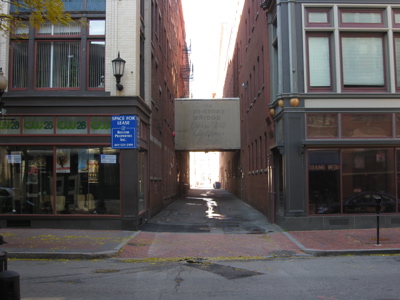
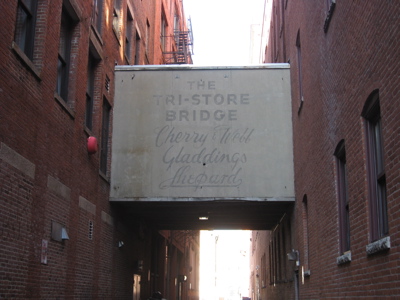
Tri-Store Bridge on Clemence St.
Of the three department stores, Shepard’s was easily the most successful. Opened in 1880, the store occupied two floors of 255 Westminster. It started off as a small retail store and soon found success. The department store grew to sell furniture, housewares, clothing, books and in 1896, Sheperd’s purchased the neighboring building and occupied the entire block. The result was a five to six story brick and terra cotta building with stucco masonry and cast iron supports. These architectural details, and the original iron and glass entrance on Westminster, can still be seen today. Outside the entrance stands a tall street clock with the neon Shepard’s logo as a landmark to the once flourishing market seen in downtown Providence. In 1974, Shepard’s succumbed to the pressures of suburban retail and permanently closed its doors, ending over one hundred years of business. For the next two decades, 255 Westminster stood vacant and the architectural beauties deteriorated with each passing year. However, in 1994, Providence Preservation Society included the building on their “Ten Most List” and the Rhode Island Port Authority issued nearly $34 million of bonds for the building’s renovation. Within in a year, in 1995, the University of Rhode Island decided to use the Shepard’s Building for offices and continuing education.
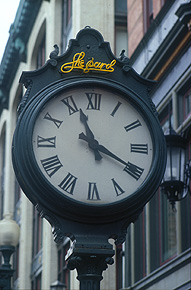
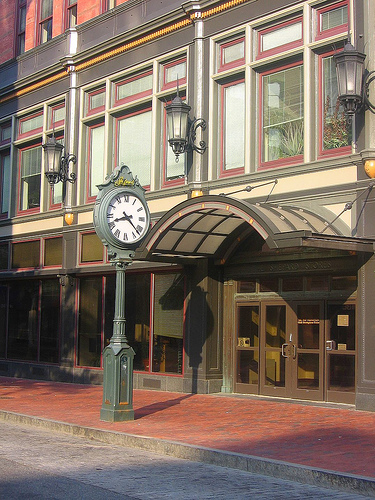
From the Shepard’s building, we can see that besides its commercial uses, graffiti also acts as an effective memorial. Unlike built memorials, graffiti does not take up extra space, will commonly capture dull, blank brick walls and last generations. Although Shepard’s store closed its doors to the public long ago, the graffiti signage stands as a means of communication to Providence’s otherwise forgotten past. The Tri-Store Bridge thus preserves the memory of Providence’s most significant department store in the minds of those who have lived long enough to have experienced it. In relation to the argument of “always remember/never forget”, the Tri-Store Bridge and Shepard’s street clock will always act as a reminder and allow us to remember Providence’s role as a commercial hot-spot in the early 20th century.
